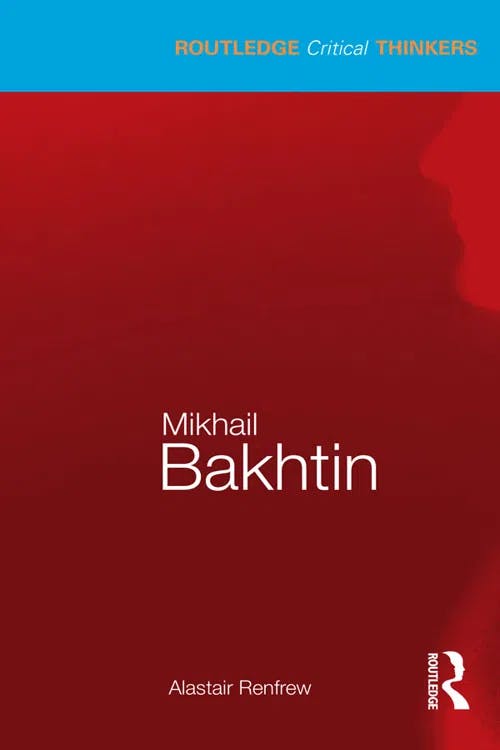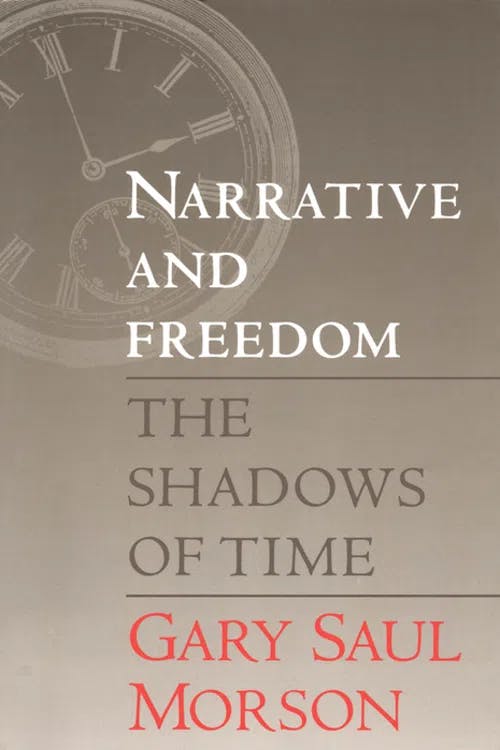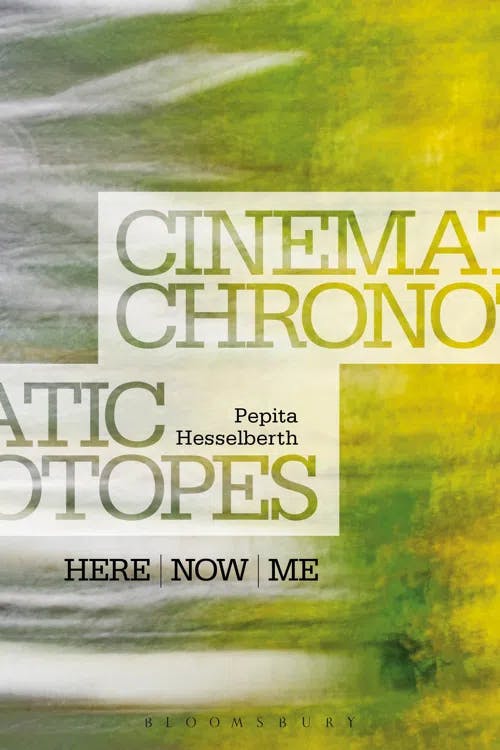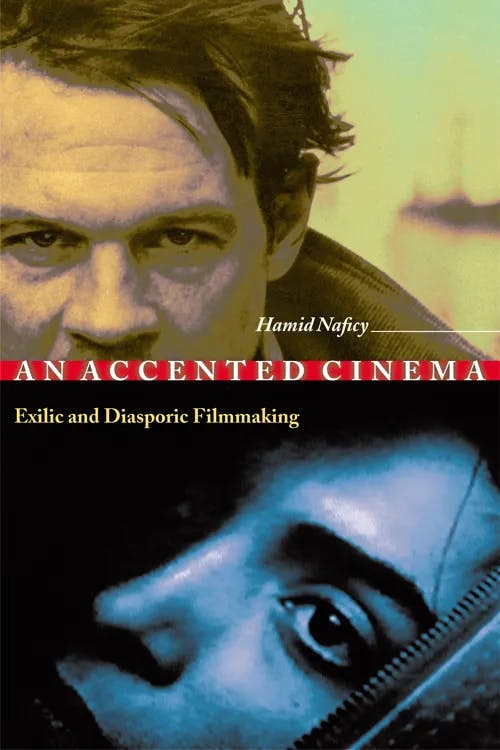What is the Chronotope?
PhD, English Literature (Lancaster University)
Date Published: 01.06.2023,
Last Updated: 24.01.2024
Share this article
Definition and origin
The chronotope is a term used by Russian literary theorist Mikhail Bakhtin (1895–1975) to describe how temporal-spatial relationships are expressed in literature. The term, originally used in mathematics, comes from “chronos” meaning “time” and “topos” meaning “space”. Bakhtin sees time and space as inextricably linked in narratives.
In his essay “Forms of Time and Chronotope in the Novel”, Bakhtin suggests,
In the literary artistic chronotope, spatial and temporal indicators are fused into one carefully thought-out, concrete whole. Time, as it were, thickens, takes on flesh, becomes artistically visible; likewise, space becomes charged and responsive to the movements of time, plot and history. This intersection of axes and fusion of indicators characterizes the artistic chronotope. (The Dialogic Imagination, 1981)
We can see this happen in sites such as museums. In museums, the past solidifies in the form of artifacts, allowing the visitor to experience history by interacting with something concrete and tangible. The space of the museum, in contrast, is subject to the impact of time. In one sense, the physical site of the museum will become more decrepit as the building begins to show signs of wear, or the architecture or furnishings become outdated. On a more conceptual level, our perception of the site of the museum changes over time. For example, our understanding of the historical background of the artifacts in the museum is altered by our own cultural context; we may see artifacts as symbols of colonialism and imperialism, something which may not have been considered when the museum was first established. Therefore, space and our understanding of it changes over time.
This experience of space-time in the real world, according to Bakhtin, is reflected in literature. Bakhtin argues that the literary-artistic chronotope works as a “fourth dimension” which makes the interaction between time and space, something we experience every day, “appreciable from the aesthetic point of view” (1981). This is achieved in literature through the use of advances in the plot (prolepsis) and setbacks (analepsis). To take one example, we can see this in Arundhati Roy’s The God of Small Things (1997), a family drama told over multiple generations. In “Spatial Poetics and Arundhati Roy’s The God of Small Things” (2008), Susan Stanford Friedman explains, the locations in Roy’s texts are “charged” with “historical overdetermination” and “embody the social locations that concretize the forces of history” (A Companion to Narrative Theory). Such spaces, she argues, are not merely background to the events of the plot, but are “the generative energy of narrative, the space that contains time” (Friedman, 2008). There are many more contemporary examples of narratives using prolepsis and analepsis, including the film Looper (Johnson, 2012) and the first season of Netflix’s The Witcher (Schmidt Hissrich, 2019).
Chronotopes and the creation of genre
The chronotope is essential in our understanding of genre. As Alastair Renfrew writes,
[...] the chronotope is a way of describing and categorizing the different forms of space-time relations that are manifest in literary texts and that, for Bakhtin, determine the genre to which a work belongs. At different points in the historical development of literature, different and distinct ‘forms of time’ have predominated, from the ‘adventure-time’ of the Greek novel to the ‘real historical time’ of modern, realist literature; it is the ability in fact to assimilate real historical time that determines the power and pre-eminence of the realist novel. Plot, character development, and even language itself are profoundly chronotopic; the particular chronotope of a novel determines its limits and possibilities in relation to the representation of events, concepts and ideology.
Alastair Renfrew
[...] the chronotope is a way of describing and categorizing the different forms of space-time relations that are manifest in literary texts and that, for Bakhtin, determine the genre to which a work belongs. At different points in the historical development of literature, different and distinct ‘forms of time’ have predominated, from the ‘adventure-time’ of the Greek novel to the ‘real historical time’ of modern, realist literature; it is the ability in fact to assimilate real historical time that determines the power and pre-eminence of the realist novel. Plot, character development, and even language itself are profoundly chronotopic; the particular chronotope of a novel determines its limits and possibilities in relation to the representation of events, concepts and ideology.
Bakhtin himself writes,
The chronotope in literature has an intrinsic generic significance. It can even be said that it is precisely the chronotope that defines genre and generic distinctions, for in literature the primary category in the chronotope is time. (The Dialogic Imagination, 1981)
Bakhtin identifies six types of genre: Greek romance, the adventure novel of everyday life, biography, the chivalric romance, the Rabelaisian novel, and the idyllic novel.
1. Greek romance
Greek romances, also called “adventure novels of ordeal”, were written between the second and sixth centuries. Such texts, Bakhtin suggests, have no real sense of historical time, hence why scholars often disagree about when such romances were set (with discrepancies of between five and six centuries).
In these romances, we tend to see similar narrative structures. Typically, a boy and a girl of marriageable age meet unexpectedly and fall in love. They are then separated and reunited (this often happens multiple times throughout the text), and must overcome various obstacles such as lack of parental approval, abduction, wars, mistaken identities and a whole host of other circumstances which prevent marriage between the two lovers. Eventually, the romance ends with a happy reunion through marriage.
All the action of the text occurs between the initial meeting and the marriage. Despite the other aspects of the story changing, the two characters remain in love.
As Bakhtin writes,
In this kind of time, nothing changes: the world remains as it was, the biographical life of the heroes does not change, their feelings do not change, people do not even age. This empty time leaves no traces anywhere, no indications of its passing. (The Dialogic Imagination, 1981)
The empty time in which no biographical change occurs is known as “adventure time”.
2. The adventure novel of everyday life
This type of novelistic form focuses on how time-space is represented through a personal and individual chronotope. Central to this chronotope is the theme of transformation. The adventure novel of everyday life has a character undergo a metamorphosis in which the reader is presented with “two images of an individual”, before and after the transformation (1981). These types of texts present exceptional and unusual moments in the character’s life. An example of this would be Franz Kafka’s The Metamorphosis (1915) in which the main character transforms overnight into a giant insect.
3. Biography
In biographies, historical reality is only used as a way to disclose information about the subject. However, according to Bakhtin, historical reality does not shape or influence the characters. While biographies cannot alter the historical reality of the character, perspectives of the character can be changed through the author’s innovation in terms of structuring. Moreover, the decision to conceal, and sometimes later reveal, demonstrates how time can be adjusted within this genre.
4. The chivalric romance
The chivalric romance is close to the Greek romance in a number of ways, such as the testing of the hero, presumed deaths, and issues of identity. What makes this genre distinguishable from Greek romance is how turns of events and encounters of chance are normalized due to the “miraculous” nature of the world (Bakhtin, 1981). Adventure time in this genre is structured around the miraculous, as we see a “hyperbolization of time typical of the fairy tale: hours are dragged out, days are compressed into moments” (Bakhtin, 1981). The experimentation with time in this genre, according to Bakhtin, also corresponds to the “subjective playing with space, in which elementary spatial relationships and perspectives are violated” (Bakhtin, 1981).
5. The Rabelaisian novel
This genre, according to Bakhtin, is characteristic of Renaissance writer François Rabelais. Central to this genre are the figures of the clown, the rogue, and the fool, with the action taking place in public spaces such as fairs, markets, and, most importantly, the carnival. The Rabelaisian novel form is inspired by the carnival as a cultural phenomenon in which spatial-temporal relationships are exaggerated. This exaggeration and hyperbolization serves to contest traditional values, create a sense of confusion and disorientation, and parody existing power dynamics. For more information on Bakhtain’s view of the carnival, see our study guide “What is the Carnivalesque?”
6. The idyllic novel
The idyll chronotope is one which is connected to folkloric time and a sense of unity and familiarity within an enclosed community. Such spaces and communities are self-sufficient and closed off from the rest of the world.
This form comprises different kinds of idylls within literature: the love idyll (derived from the pastoral); the agricultural idyll; the craft-work idyll; and the family idyll. These are the pure forms of idylls, but there are also mixed types within literature. The idyllic chronotope can be seen in Thomas More’s Utopia (1516). Other texts have seen the sense of unity and conformity in such spaces as potentially threatening to the outsider and, as such, have depicted such places as superstitious and unwelcoming to the outside world. We can see this in folk horror films such as The Wicker Man (Hardy, 1973), or more recently, Midsommar (Aster, 2019).
In Narrative and Freedom (1994), Gary Saul Morson argues that
Bakhtin must surely be regarded as the most remarkable modern thinker to examine time in narrative. In his hands, literary theory became a vehicle for understanding the possible existence of human freedom and ethical responsibility.
Gary Saul Morson
Bakhtin must surely be regarded as the most remarkable modern thinker to examine time in narrative. In his hands, literary theory became a vehicle for understanding the possible existence of human freedom and ethical responsibility.
Morson then helps us draw some conclusions on Bakhtin’s work on the chronotope:
- Different genres have different catalysts for change, such as the prophetic dreams seen in Greek romances. In other forms, such as the adventure novel of the everyday, events are not pre-determined and change often occurs due to personal choice.
- The models of change in each genre “implies a specific sense of human identity and individual development” (1994). In each of the novelistic forms, whether the change will impact the character depends entirely on the genre itself.
- Historical progress differs between genres; in Greek romances, details of historic significance (such as the location) do not matter. Conversely, some texts require their specific historical contexts and these details cannot be substituted: Morson explains “it is hard to see what comparable substitutions could relocate Middlemarch to Russia or Anna Karenina to the Soviet period” (1994).
- The novel’s relationship between biographical and historical time is crucial for showing how society and individuals continually shape one another.
Minor chronotopes
There are minor chronotopes within the six main novelistic forms. Examples of these minor chronotopes include: the road (a motif of meetings, new departures, turning points), the castle (spaces connected to a historic past), parlors and salons (places of politics and business where private and public meet), provincial towns (places of unity, closely-knit groups), the threshold (signifying change or crisis where the private and public meet), and the public square (boundless, exposed, and unrestricted behavior).
Let’s take the example of the road, as this is one of the most important and prominent of the chronotopes. As Bakhtin writes,
The importance of the chronotope of the road in literature is immense: it is a rare work which does not contain a variation of this motif, and many works are directly constructed on the road chronotope, and on road meetings and adventures. (1981)
An encounter on the road (literal or figurative) propels, interrupts and controls the narrative. If either party were not at that specific place or time, the trajectory of the story may be entirely different. Of course, “the road” does not necessarily mean a literal road or street, and often just refers to a journey. Homer’s epic poem The Odyssey (c. eighth or seventh century BCE) follows the hero Odysseus as he makes his way home from the Trojan War to his family in Ithaca. On this journey, he encounters many people, deities, and creatures who help to shape the story such as the goddess Circe, the cyclops, and the Laestrygonians (a tribe of cannibalistic giants).
The legacy of Bakhtin’s chronotope
Bakhtin’s writing on the chronotope has informed further research into time-space relationships and provided a framework that has been utilized again and again in a diverse range of scholarly work, both inside and outside of literature. Safet HadžiMuhamedović’s socio-anthropological study Waiting for Elijah (2018), for example, applies Bakhtin’s notion of the chronotope to the Bosnian Field of Gacko. HadžiMuhamedović labels the rift between two competing time-spaces that occupy the Field as “schizochronotopic”, building upon Bakhtin’s concept.
The concept of the chronotope has been further used to analyze cinema. In Cinematic Chronotopes (2014), Pepita Hesselberth writes,
The notion of cinematic chronotope highlights the constructed character and interrelatedness of spatial and temporal configurations of the cinematic while stipulating that it is with and through these configurations that we interact and give shape to our sense of self within our media-saturated world.
Pepita Hesselberth
The notion of cinematic chronotope highlights the constructed character and interrelatedness of spatial and temporal configurations of the cinematic while stipulating that it is with and through these configurations that we interact and give shape to our sense of self within our media-saturated world.
Here, Hesselberth looks at the spatio-temporal configurations of the cinematic in the work of Andy Warhol and Rafael Lozano-Hemmer, as well as both European art house films and Hollywood cinema.
Hamid Naficy expands upon the cinematic chronotope, focusing on the work of marginalized film creators. In An Accented Cinema (2018), Naficy argues that cinematic forms (i.e. open or closed) and stylistic choices can be understood through a Bakhtinian lens. The open form is represented through external locations, bright lighting and mobile characters, while the closed form has a preference for interior locations and dark lighting. Equally, in terms of temporal representation, open films “favor continuity, introspection, and retrospection” whereas closed films create a sense of “temporal claustrophobia” (Naficy, 2018).
Naficy further explains that,
Each film may contain a primary chronotope or multiple "mutually inclusive" chronotopes, which may reinforce, coexist with, or contradict one another. These configurations provide the optics with which we may understand both the films and the historical conditions of displacement that give rise to them. (2018)
Hamid Naficy
Each film may contain a primary chronotope or multiple "mutually inclusive" chronotopes, which may reinforce, coexist with, or contradict one another. These configurations provide the optics with which we may understand both the films and the historical conditions of displacement that give rise to them. (2018)
Naficy’s work on accented cinema, a newly emerging form focused on the exile and diaspora of the filmmaker, attests to the transportability of Bakhtin’s work between different narrative forms and across different time periods.
The chronotope has proven equally useful in the field of Digital Humanities. Lancaster University’s AHRC-funded research project Chronotopic Cartographies explores how digital tools can be used to map out spaces in literary texts. The aim of this research is to create a new visual-verbal method of analyzing real and literary spaces. Bakhtain’s concept of the chronotope is also used here to identify temporal and spatial shifts in a variety of genres. Such research suggests that Bakhtin has continued relevance in the humanities even in the digital age.
Further resources & reading on Perlego
Chronotopes and Migration: Language, Social Imagination, and Behavior (2021) by Farzad Karimzad and Lydia Catedral
Chronotopes of Law: Jurisdiction, Scale and Governance (2015) by Mariana Valverde (2015)
Chronotopes of the Uncanny: Time and Space in Postmodern New York Novels. Paul Auster's »City of Glass« and Toni Morrison's »Jazz« (2014) by Petra Eckhard
What is the chronotope in simple terms?
What are the major novelistic genres according to Bakhtin?
What are some minor chronotopes?
Bibliography
Bakhtin, M. M. (1982) The Dialogic Imagination: Four Essays, translated by Caryl Emerson and Michael Holquist. University of Texas Press. Available at: https://utpress.utexas.edu/9780292715349/the-dialogic-imagination/
HadžiMuhamedović, S. (2018) Waiting for Elijah: Time and Encounter in a Bosnian Landscape. Berghahn Books. Available at: https://www.perlego.com/book/547679/waiting-for-elijah-time-and-encounter-in-a-bosnian-landscape-pdf
Hesselberth, P. (2014) Cinematic Chronotopes: Here, Now, Me. Bloomsbury Academic. Available at: https://www.perlego.com/book/801172/cinematic-chronotopes-here-now-me-pdf
Homer (2014) The Odyssey. Harper Touch. Available at: https://www.perlego.com/book/601870/odyssey-pdf
Kafka, F. (1915) The Metamorphosis. Available at: https://www.perlego.com/book/1302587/metamorphosis-pdf
Looper (2012) Directed by Rian Johnson. TriStar Pictures. Available on Sky Cinema.
More, T. (1551, [2014]) Utopia. 2nd edn. Available at: https://www.perlego.com/book/1089123/utopia-second-edition-pdf
Midsommar (2019) Directed by Ari Aster. A24. Available on Netflix.
Morson, G. S. (1984) Narrative and Freedom: The Shadows of Time. Yale University Press. Available at: https://www.perlego.com/book/1161594/narrative-and-freedom-pdf
Naficy, H. (2018) An Accented Cinema: Exilic and Diasporic Filmmaking. Princeton University Press. Available at: https://www.perlego.com/book/737894/an-accented-cinema-exilic-and-diasporic-filmmaking-pdf
Renfrew, A. (2014) Mikhail Bakhtin. Routledge. Available at: https://www.perlego.com/book/1616073/mikhail-bakhtin-pdf
Roy, A. (2011) The God of Small Things. Fourth Estate. Available at: https://www.perlego.com/book/691266/the-god-of-small-things-pdf
The Wicker Man (1973) Directed by Robin Hardy. Warner Bros. Available on Amazon Prime.
The Witcher (2019 - present). Created by Lauren Schmidt Hissrich. Available on Netflix.
PhD, English Literature (Lancaster University)
Sophie Raine has a PhD from Lancaster University. Her work focuses on penny dreadfuls and urban spaces. Her previous publications have been featured in VPFA (2019; 2022) and the Palgrave Handbook for Steam Age Gothic (2021) and her co-edited collection Penny Dreadfuls and the Gothic was released in 2023 with University of Wales Press.




